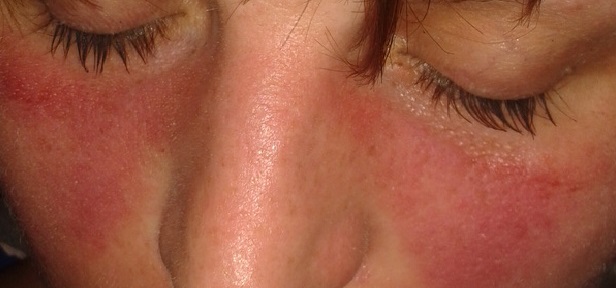
Systemic Lupus Erythematosus (SLE)
- Posted Category : Articles
- 19 May 2018
SLE can affect almost any organ system; thus, its presentation and course are highly variable, ranging from indolent to fulminant.
In childhood-onset SLE, there are several clinical symptoms more commonly found than in adults, including malar rash, ulcers/mucocutaneous involvement, renal involvement, proteinuria, urinary cellular casts, seizures, thrombocytopenia, hemolytic anemia, fever, and lymphadenopathy. In adults, Raynaud pleuritis and sicca are twice as common as in children and adolescents. The classic presentation of a triad of fever, joint pain, and rash in a woman of childbearing age should prompt investigation into the diagnosis of SLE.
Patients may present with any of the following manifestations:
- Constitutional (eg, fatigue, fever, arthralgia, weight changes)
- Musculoskeletal (eg, arthralgia, arthropathy, myalgia, frank arthritis, avascular necrosis)
- Dermatologic (eg, malar rash, photosensitivity, discoid lupus)
- Renal (eg, acute or chronic renal failure, acute nephritic disease)
- Neuropsychiatric (eg, seizure, psychosis)
- Pulmonary (eg, pleurisy, pleural effusion, pneumonitis, pulmonary hypertension, interstitial lung disease)
- Gastrointestinal (eg, nausea, dyspepsia, abdominal pain)
- Cardiac (eg, pericarditis, myocarditis)
- Hematologic (eg, cytopenias such as leukopenia, lymphopenia, anemia, or thrombocytopenia)
In patients with suggestive clinical findings, a family history of autoimmune disease should raise further suspicion of SLE.
The diagnosis of SLE is based on a combination of clinical findings and laboratory evidence. Familiarity with the diagnostic criteria helps clinicians to recognize SLE and to subclassify this complex disease based on the pattern of target-organ manifestations. The presence of 4 of the 11 American College of Rheumatology (ACR) criteria yields a sensitivity of 85% and a specificity of 95% for SLE. When the Systemic Lupus International Collaborating Clinics (SLICC) group revised and validated the ACR SLE classification criteria in 2012, they classified a person as having SLE in the presence of biopsy-proven lupus nephritis with ANA or anti-dsDNA antibodies or if 4 of the diagnostic criteria, including at least 1 clinical and 1 immunologic criterion, have been satisfied.
Investigation, Imaging studies and Procedures of SLE include:
- CBC with differential
- Serum creatinine
- Urinalysis with microscopy
- ESR or CRP level
- Complement levels
- Liver function tests
- Creatinine kinase assay
- Spot protein/spot creatinine ratio
- Autoantibody tests
- Joint radiography
- Chest radiography and chest CT scanning
- Echocardiography
- Brain MRI/MRA
- Cardiac MRI
- Arthrocentesis
- Lumbar puncture
- Renal biopsy
Management of SLE often depends on the individual patient’s disease severity and disease manifestations. Medications used to treat SLE manifestations include the following:
- Antimalarials (eg, hydroxychloroquine)
- Corticosteroids (eg, methylprednisolone, prednisone), short-term use recommended
- Nonbiologic DMARDS: Cyclophosphamide, methotrexate, azathioprine, mycophenolate, cyclosporine
- Nonsteroidal anti-inflammatory drugs (NSAIDS; eg, ibuprofen, naproxen, diclofenac)
- Biologic DMARDs (disease-modifying antirheumatic drugs): Belimumab, rituximab, IV immune globulin
The world celebrates annually on 10th of May the International Day of SLE, according to the latest international statistics, there are about five million people suffering from SLE in the world. In the past, SLE was a disease that can not be cured, today SLE patient can live a normal life because of the progress made in the medical field.
PMA_SA
All opinions and comments displayed do not necessarily represent the official opinion of the website, but they represent the view of the writer
